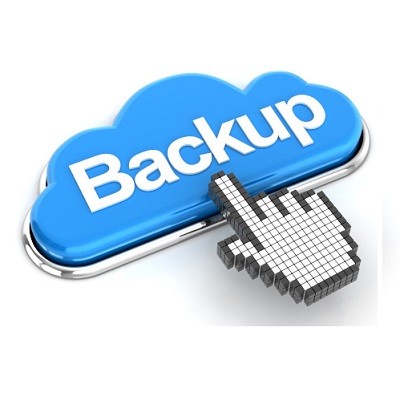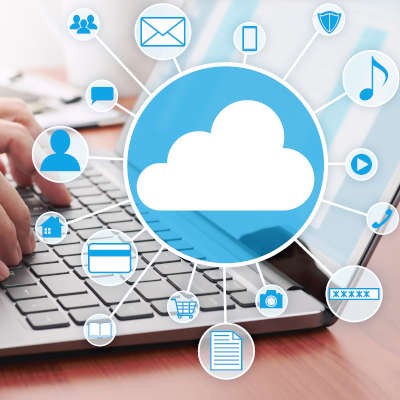For the past few months, a much larger percentage of people have been working from home. This remote workforce has proven to be much more effective than many would have thought, but some companies haven’t had the success getting the production out of their remote workers that others have. Today, we present three tips that will help you get the most out of your remote workforce.
Cerberus IT Solutions Blog
As workplaces and offices everywhere have struggled to cope with the restrictions brought on by social distancing mandates, the adoption of automated solutions has surged ahead. Of course, this does open a few important questions to consider. For instance, what this could mean for employment post-pandemic, and how automation may be used in the future to mitigate the impacts we’re currently experiencing.
Businesses today should be accepting card-based payments, regardless of their size. In addition to the convenience it offers to customers, it’s the most secure means you have of being paid. To protect consumers and their personal and financial information, many card providers have adopted a unified regulation that applies to businesses that accept these payments. Let’s review this regulation and how it impacts the average small-to-medium-sized business.
Many businesses looking to consolidate their tools are turning to cloud services and software suites that offer a centralized collection of solutions—such as the G Suite, as offered by Google. While G Suite offers the Google Drive as a means of organizing your work resources and documents, different files can sometimes be saved in different places. This week, our tip is going to cover how you can work around this fact with a feature called Workspaces.
There is a saying that you hear a lot in business: Plan for the worst, hope for the best. This is typically related to data redundancy, cybersecurity, or one of any other proactive steps a business should take to control the continuity of their business. What happens when you plan for the worst, but the best comes to fruition? What happens when your business consistently meets demand, prospers without issue, and grows quickly? Today, we will take a look at some issues the small business owner has to deal with when his/her business isn’t so small anymore.
We all store data on our computers. Whether you have family photos and text documents on your home computer, or databases and on-premises applications running your entire business, data is typically stored in exactly the same way. If you knew how delicate your data actually was, you’d never let a single file exist in one place ever again. Let’s explore that.
While many businesses right now have found it best for their operations to shift to a remote strategy, it is important to consider how these operations will return in-house when it is again appropriate to do so. For this week’s tip, we’re reviewing a few best practices to help you contend with both processes.
“Hello sir/ma’am, I am a member of royal [sic] family and I am in grave danger in my country. If you send me money to get out safely, I will share my great riches with you as reward.”
Scams like this one have become a punchline for many, which makes you wonder why they are still commonly used by cybercriminals. As it turns out, there’s a very compelling reason that they do so, one that’s been known for years.
All a business’ technology is important to its operations, but based on its industry, certain priorities are bound to arise. A recent survey cast a light on some of these priorities, giving us a view of what small to medium-sized businesses are concerning themselves with. Let’s review some of the trends this survey revealed to see how well your priorities match up.
Imagine for a minute that you work in a small factory or machine shop. Some wind comes through and drops a 200-year-old maple tree through the roof onto the machines that you use to create your product. The devastation is total. If you have a second factory built to scale from the first, you could just ship your workers over to that one and keep productivity high. Chances are, however, there is no second factory. Your business is done until you can get the situation fixed. It could take days, weeks, or even months to get your business back on track; and if the stats are any indication, it probably won’t.
Hope can be a big part of a person’s notion to start their own business. Needless to say that entrepreneurial hope doesn’t always consider that there will be a global pandemic that grinds the operational effectiveness that you’ve spent years building to a halt. Hope does, however, play a big part in the creation of a business continuity plan. Today, we’ll briefly discuss why you should never lose hope and how being prepared stems from the same notion as starting a business.
Video conferencing is a crucial technology for businesses, especially now. Although, while it has the benefits of accessibility, it certainly is a different animal than your run-of-the-mill in-person meeting… as due to this, it has a challenge that an in-person meeting does not. Let’s go over what this challenge is, and how to overcome it.
Today’s businesses are more dependent on collaboration than ever before, and that’s without even taking the current social climate into consideration. However, accounting for these considerations, it seemed appropriate that we shared a few tips to help increase your collaborative capabilities while your team is working remotely.
The COVID-19 pandemic has put a lot of stress on people. Nowhere is this more true than in the small business arena. Small businesses, many of which were forced to suspend or severely alter their operations, are also dealing with cyberattacks. Let’s take a look at the effects COVID-19 has on small businesses regarding cybersecurity.
With the development of business technology, tools have been introduced that provide greater and greater benefits to organizations that use them. Perhaps the most useful that we have today, the cloud, has enabled businesses of all sizes to take advantage of far better tools than were available to them before. Let’s take a closer look at some of them.
The World Health Organization has been busy dealing with one of the biggest calamities in contemporary times, the COVID-19 pandemic that has had much of the world on pause for the past few months. Unfortunately, they’ve been dealing with an increase in cyberattacks. Today, we’ll take a look at some of the issues the WHO is having with cybercriminals.
With COVID-19 still in play, working remotely has become how many employees have continued to fulfill their work responsibilities. Now, as we settle into this new way of doing things, the question has arisen: after all this is over, will business operations return to the way they once were? Let’s discuss.
As statewide stay-at-home orders lapse, more and more businesses aim to reopen. For a fair share of these businesses, remote technology has been a godsend. For the businesses that cannot reopen yet, being able to monitor your IT infrastructure while you are out of the office is extremely important to the sustainability of your remote access solutions. Today, we’ll discuss monitoring your infrastructure.
Spoiler alert: it isn’t good news.
On September 7th, 2017, it was made public that Equifax had suffered one of the largest cybersecurity breaches in history, and as a result, had left 145.5 million consumers in the United States vulnerable to identity theft. Due to a website application vulnerability, the personally identifiable information of these people was exposed from May until July of that year.




















